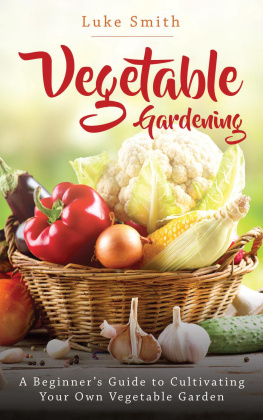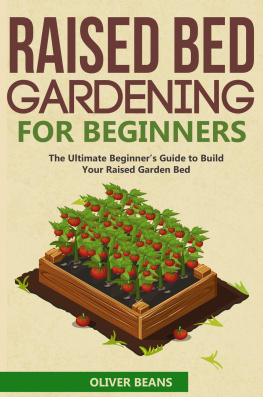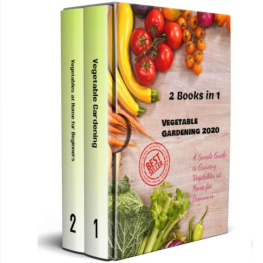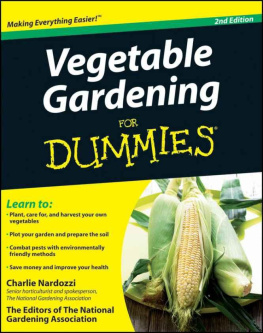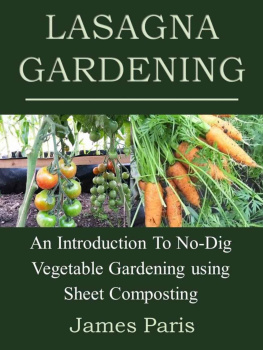If you havent gardened before, growing your own food might seem overwhelming. My advice? Get excited, but start small! Reading this book is a great start, and for information about growing in your local area, you could also join a local garden club, visit a community garden, talk to your neighbors or contact your local Agriculture extension agent.
Many gardeners jump in head first, without doing the planning necessary to ensure their new project is successful. This section of the book will help you do the groundwork that will ensure your garden is both productive and accessible.
2.1 What do you want from your garden?
One of the most common mistakes that beginning vegetable growers make is failing to plan their garden. Before you start building, you need think about what you actually want from your garden so that you can make sure it will suit your lifestyle. Ideally, your garden should suit the space and style of your home and yard, and should not be a drain on your time or your physical abilities. Consider the following basic elements.
Appearance
What do you want your garden to look like? What is appealing to you? Would you like a garden intercropped with flowers, or a dedicated vegetable bed? Are there any neighborhood planning schemes you must abide by with regard to the appearance or location of your vegetable garden?

Physical abilities
How agile are you? Are you able to kneel in the garden? Or do you need a more easily accessible garden like a vertical garden or raised bed in order to avoid back and knee problems? Consider your personal situation and know if you are capable of performing difficult physical tasks. And if it turns out you need some aid, no problem! Simply figure out a plan to work around you physical state or let someone help you with some gardening tasks.
Space
How much space do you have? If you live in an apartment, you might like to try container gardening. If you do not have any top-soil, you could try a lasagna garden or a raised bed. No matter how much space you have, everyone can start a garden. It is about using the space you have to your advantage and using your imagination to optimize what you have what is your real limitation. Space for gardening is everywhere as long as there is a pot with some soil, a plant and some water and sunlight.
Time
How much time do you want to spend tending your garden? If you arent sure, start small and expand as necessary. Time management is important because gardening is quite a time consuming thing to do. Only start are garden when you are committed to it and you are absolutely sure you can manage the multitude of different tasks time-wise.
2.2 Choosing the perfect location
Once you know what you want from your garden, you need to find somewhere to put it. The location of a garden can be the deciding factor in the health of your plants, yet vegetable patches are often an afterthought, added in an out-of-the-way corner after the rest of the landscaping is complete. In order to choose the perfect location for your garden, you need to think about what plants need to grow.
Sunlight
While some things will grow in shade, most vegetables require full sunlight, so your garden needs to be in a sunny spot. The only real exception to this is in tropical or arid climates, where a vegetable garden will benefit from afternoon shade in the summer.
Drainage
There are very few vegetables which will tolerate water-logged soil, so do not place your garden in an area that is boggy or wet. Plants need both air and water around their roots to grow, and dont like having wet-feet; this is why pots always have holes in the bottom.
Water
While plants need good drainage, they also need enough water to grow. It is best to put your garden somewhere within reach of the hose, so that you can water your plants easily.
Soil
Soil is easily the most important element of a vegetable garden - it is so important that the next chapter is all about soil management! Suffice to say that if you have the option, situate your garden in the area of your backyard with the deepest top soil. Areas of loose, moist soil are preferable to areas where the soil is compacted or boggy.




